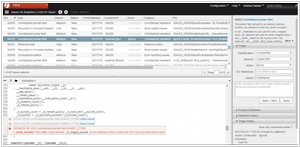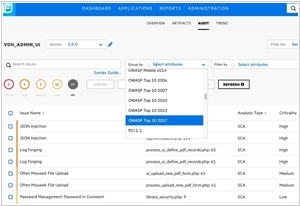Coverity vs Fortify
November 09, 2023 | Author: Michael Stromann
Coverity and Fortify are both prominent static application security testing (SAST) tools designed to identify and remediate security vulnerabilities in software code. While they share the common goal of enhancing software security, there are key differences in their features, approach, and integration capabilities.
Firstly, the analysis techniques employed by Coverity and Fortify differ. Coverity relies on advanced static analysis to detect vulnerabilities by analyzing the source code and identifying potential issues without executing the program. On the other hand, Fortify utilizes a hybrid approach, combining static analysis with dynamic analysis techniques. This allows Fortify to not only analyze the code statically but also simulate runtime conditions, offering a more comprehensive understanding of the application's security posture.
Secondly, the scalability and language support vary between the two tools. Coverity is known for its scalability and ability to handle large codebases efficiently. It supports a wide range of programming languages, making it versatile for diverse software development environments. Fortify, while also scalable, may have a slightly steeper learning curve for large-scale implementations. It offers extensive language support as well, but its integration with specific languages may require additional configuration.
See also: Top 10 Application Security Software
Firstly, the analysis techniques employed by Coverity and Fortify differ. Coverity relies on advanced static analysis to detect vulnerabilities by analyzing the source code and identifying potential issues without executing the program. On the other hand, Fortify utilizes a hybrid approach, combining static analysis with dynamic analysis techniques. This allows Fortify to not only analyze the code statically but also simulate runtime conditions, offering a more comprehensive understanding of the application's security posture.
Secondly, the scalability and language support vary between the two tools. Coverity is known for its scalability and ability to handle large codebases efficiently. It supports a wide range of programming languages, making it versatile for diverse software development environments. Fortify, while also scalable, may have a slightly steeper learning curve for large-scale implementations. It offers extensive language support as well, but its integration with specific languages may require additional configuration.
See also: Top 10 Application Security Software




